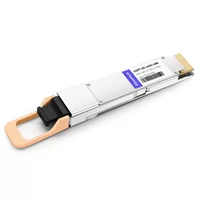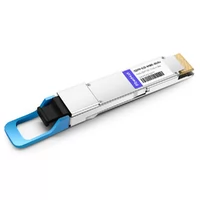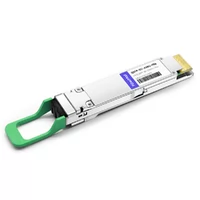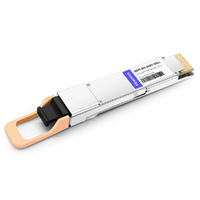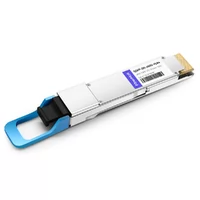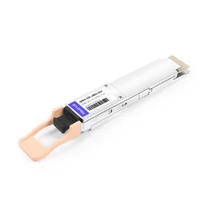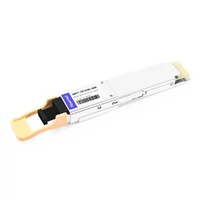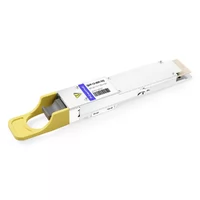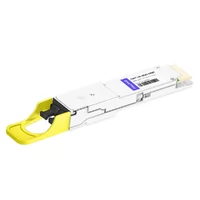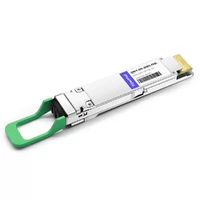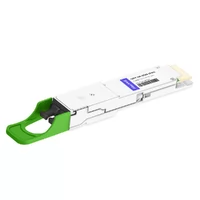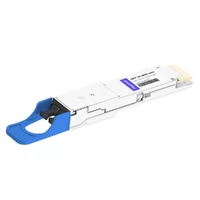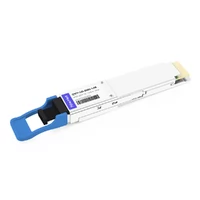In the quick-changing tech world we have today, businesses and data centers need network solutions that are fast and energy-saving. Quad small form-factor pluggable switches are crucial in modern networking as they can be scaled up or down while remaining compatible with other systems, making them flexible for use in various environments requiring high-speed connections. The purpose of this guide is to provide a detailed overview of QSFP switches including their architecture, design features as well as benefits over conventional networking devices. Such an understanding will help readers appreciate how these devices improve network efficiency by enabling large amounts of data to be transmitted quickly, thereby ensuring reliability across different nodes within an IT infrastructure. If you work as an information technology expert or network engineer or are just interested in technology, then this article should equip you with enough knowledge about quad small form factor pluggable switching solutions so that you can easily navigate through all its complexities.
Table of Contents
ToggleWhat is a QSFP Switch and How Does It Work?

Key Features of a QSFP Switch
QSFP switches were created in order to fulfill all the needs which are set by the present day networks by offering a number of important features. Initially, they had a high port density that enables multiple high-speed connections in a small size, thus being necessary for data centers and enterprise environments. Secondly, these devices possess flexible compatibility as they can support different data rates like 40 Gbps, 100 Gbps or even 400 Gbps which allows scalability in networking solutions. Another characteristic is that QSFP modules can be replaced while still working, so this reduces downtimes during maintenance or upgrades, enhancing operational efficiency. Besides that, advanced signal integrity capabilities, including error correction and signal equalization implemented into QSFP switches, help to preserve data transparency over long distances. Furthermore, they also come with built-in monitoring and management functions, which allow real-time analysis of network performance for optimization purposes.
Basic Functionality of QSFP Ports
In present-day networking environments, Quad Small Form-factor Pluggable (QSFP) ports are very important for high-speed data transmission. They operate by converting electrical signals directly into optical ones thus making it possible to achieve data transfer rates from 40 Gbps up to 400 Gbps. Multiple channels are supported by QSFP ports, with each channel dealing with a certain amount of the total data rate. This design, based on multi-channel architecture, allows for effective parallel processing and data transmission. What is more, these ports can be replaced without switching off the system, which is why they are considered hot-swappable, which in turn reduces downtime and increases operational flexibility. Moreover, advanced optical transceivers built into qsfp ports ensure strong signal integrity as well as low data loss over larger distances. All these features make qsfp-based networking solutions highly reliable and performant in enterprise settings and data centers alike.
Comparing QSFP28 with Other Standards
The QSFP28 standard is versatile and high-powered, allowing for data transmission at 100 Gbps. This represents a significant leap from the earlier QSFP+ or CFP standards. Unlike the 40 Gbps capacity of QSFP+, four lanes of 25 Gbps each are used by QSFP28 to increase throughput hence achieving a total bandwidth of 100 Gbps. That is why it has become very popular in modern data centers, which need fast and dense solutions.
QSFP28 is much smaller than CFP modules designed for 40Gbps/100Gbps applications, thus making them more space-saving and power-saving while being deployed in space-constrained environments. The compactness together with lower power consumption characteristics contribute towards efficient and scalable network design using smaller form factor switches based on this technology.
In addition to that, the ports of older generation devices can work well with new ones without any problem because there is still a commonality between them, i.e., backward compatibility, so you don’t need to change everything when upgrading or expanding your network infrastructure with these products. This fact also permits various interfaces like CWDM4, PSM4, and SR4, among others, to be supported by different types of QSFP28 transceivers, thereby enhancing flexibility during planning stages as well as implementation phases within modern networks.
To sum it up, QSFP28 offers robustness where speed is concerned but not only that since its predecessors were outperformed significantly by this device in terms of rate per inch occupied on board area consumed watts dissipated per unit time expended; thus becoming an ideal choice for many contemporary data communication needs.
What are the Advantages of Using a QSFP Switch in Modern Networks?

Improved Port Density and Bandwidth
Utilizing a modern network can greatly increase the number of ports and their bandwidth through the use of a QSFP switch. This switch is designed to transmit data at high speeds and has multiple 100 Gbps ports in one device, which makes it highly effective in terms of space utilization within data center racks. The densely populated port configuration minimizes the necessity for additional switches, thereby reducing both capital expenditure (CapEx) and operational expenditure (OpEx). In addition, these switches boast large capacities capable of supporting better data throughput as well as faster communication speed required by today’s applications with ever-increasing demand for more information processing power. Such an improved density coupled with higher speed capacity also simplifies scalability across networks, allowing upgrades or expansion to be done without any disruption when there is change in needs over time.
Supporting Multi-Mode and Single-Mode Fiber
QSFP switches are very flexible. They can support both multi-mode and single-mode fibers which is necessary for different networking environments. This is because multi-mode fiber is inexpensive and has the capacity to transmit data at high rates over short distances within data centers or enterprise environments, while single-mode fiber is used for long-distance communication since it has higher bandwidth capabilities with minimal signal loss over longer distances. Having this dual compatibility makes QSFP switches applicable in many areas, thus making them versatile and able to suit specific requirements of current networks without sacrificing performance or dependability.
Energy Efficiency and Cost Savings
Data centers can save a lot of money and energy by using QSFP switches. These switches combine many high-speed ports into one device, which cuts down on the number of switches needed and thus lowers power consumption and cooling requirements as well. This reduction in equipment also results in less operating expense since there are fewer items to maintain and power. Furthermore, newer models have additional energy-saving capabilities like allocating power dynamically or entering low-power modes when not being used for extended periods. Therefore, businesses that want to make their data center processes more efficient from an economic standpoint while still staying environmentally friendly will find it hard to resist such devices that offer cost-effective advantages through reduced electric usage.
How do you deploy QSFP switches in data centers?

Optimizing Network Infrastructure for Deployment
There are some things that you should think about if you want to use QSFP switches efficiently in data centers. The first is evaluating the present network topology so as to identify areas where these switches will have a big impact on bandwidth aggregation and reduction of latency. Planning out how things will be laid physically is important because it helps with cable management and airflow which are necessary for good performance as well as cooling efficiency maintenance. Additionally, integrating these switches into existing network management protocols can simplify operations while improving overall network resiliency. Compatibility with both old-fashioned devices and those of the next generation should be ensured in order to get maximum benefits from your investment in QSFP technology, thereby making the transition seamless. By concentrating effort here, data centers can achieve greater performance scalability and energy-saving ability, thus optimizing for future-readiness their network infrastructure.
Integration with Existing Ethernet Switches
To ensure smooth interoperability, successful integration of QSFP switches with an Ethernet infrastructure necessitates careful planning and execution. The first step is to evaluate if your current Ethernet switches are compatible with QSFP modules or transceivers based on things like port configurations and supported data rates. Use conversion cables or adaptors from QSFP to Ethernet whenever there are connectivity gaps that need to be bridged. Implement VLANs as well as other traffic management strategies, such as network segmentation, for efficient utilization of bandwidth. Equally important is updating firmware and software to support more advanced functionalities plus security protocols with the latest versions available. In this way, data centers can merge QSFP switches into their existing Ethernet environments thus enhancing network performance and scalability too.
Ensuring Network Security and Reliability
To insert QSFP switches into a network and at the same time ensure security and reliability, it is necessary to use a multi-tiered system that includes physical, network, and application security measures. Through constant monitoring and auditing of network traffic, potential vulnerabilities can be detected along with unauthorized access points. Robust encryption protocols should be implemented together with strong access controls like two-factor authentication so that data will not be easily intercepted or breached. Firewalls may also be deployed, as well as intrusion detection systems, which act as another line of defense against cyber threats. Apart from this, all firmware, together with software, must remain up-to-date because they have known vulnerabilities that could be exploited by hackers, while new risks need regular pentest for recognition and mitigation purposes. When these security measures are integrated into data centers, a resilient networking environment will be guaranteed alongside safety precautions for the same.
How Does a QSFP Switch Compare to SFP and Other Optical Technologies?

Differences Between SFP and QSFP
SFPs (Small Form-factor Pluggables) and QSFPs (Quad Small Form-factor Pluggables) are transceivers used in networking environments, but they differ greatly in features and uses. Normally, small form-factor pluggable transceivers enable speeds of up to 4.25 Gbps; thus, they are majorly applied in Gigabit Ethernet alongside Fibre Channel, among other correlated applications. The module is configured for single-lane use where necessary or suitable.
Conversely, quad small form-factor pluggable transceivers support increased data rates that can be as high as 100 Gbps while also having a multi-lane design. Designed for use in areas that require dense high-capacity connections like data centers as well as high-performance computing environments. These modules may also accommodate various speeds through different generations, which include but are not limited to QSFP+, QSFP28, or even the latest QSFP-DD.
To put it differently; SFP modules work well with simple low bandwidth needs whereas QSFPs offer better flexibility and performance where there is need for more dense connectivity with higher throughput. Hence, integrating these tranceivers could act as an important step towards future proofing network infrastructure against ever increasing demands imposed by contemporary data traffic patterns.
Comparing Optical and RJ45 Connectivity
Networking can be done using optical or RJ45 connections, which have different advantages and use cases. For example, through the use of fiber optic cables, optical connectivity enables higher bandwidths and longer distances of up to 1000 Gbps. It also resists electromagnetic interference better than twisted pair copper cables while maintaining low latency such that it becomes suitable for high performance computing environments within data centers or any other infrastructure acting as a backbone.
On the other hand, RJ45 connectors can transmit data at speeds of 10Gbps over distances not exceeding 100 meters hence making them cheaper alternatives when compared against their counterparts. They are also easy to install and maintain. Therefore, they are applicable in home networks as well as office settings. Moreover, these types of connectors tend to be stronger than optical ones because they do not break easily, especially if there is frequent manipulation of wires around them.
In conclusion, whenever someone needs fast transfer rates combined with low delays between points that are far apart from each other, opt for optics, whereas those who want cost-effective solutions within short-range communication links should go for RJ-45s. The choice between these two will depend mainly on factors such as required bandwidth capacity, distance limitations, and financial restrictions.
Benefits of Using QSFP-DD for 40G and Beyond
Quad Small Form-factor Pluggable Double Density (QSFP-DD) is a high-speed and high-density module that yields many advantages for network infrastructure as data centers and communication networks scale to 40G and beyond.
- Port Density Increase: It offers twice the density of existing QSFP form factors which means more ports can be added within the same space in a data center. This saves on floor space utilization efficiency while allowing better growth potential in network design.
- Higher Data Rates: Designed with capacity support reaching up to 400 Gbps, these modules are capable of meeting communication needs of future generations thus making them well-suited for AI (Artificial Intelligence), HPC (High Performance Computing) among other data-intensive applications where fast throughput is necessary.
- Backward Compatibility: With backward compatibility feature built-in; organizations can upgrade their systems speed without having to abandon previous investments made on infrastructures supporting lower speeds through this type of plugs which will work with most if not all existing QSFP ports hence ensuring smooth transitions into higher rates while still protecting current hardware.
- Energy Saving: Being more power-efficient per bit transmitted than its predecessors consume less power during operation so it’s ideal for use in large-scale data centers where electricity consumption management becomes critical due to cooling requirements.
- Better Network Flexibility: Supporting various data rates plus different protocols makes this product very flexible when it comes to deploying networks because one does not require many types or variants but only needs a few sets that fit all platforms, thereby simplifying inventory control along with operational tasks such as switch replacements during troubleshooting exercises etc.
In summary, QSFP-DD presents itself as an adaptable solution designed for tomorrow’s networks, which are expected to handle much higher traffic volumes than what we have today; hence, it can operate efficiently at any point between 400Gbps/400GBE levels or above.
What Brands and Models of QSFP Switches are Leading the Market?

Cisco: Features and Innovations
Cisco QSFP switches are leading network technology, which have features and innovations designed to meet the growing needs of modern data centers as well as enterprise networks.
- High Port Density: Cisco’s QSFP switches like Nexus 9000 series are known for their high port density that allows scalable network deployments. These switches support a large number of 40G and 100G QSFP ports, maximizing rack space utilization while minimizing cabling complexity.
- Advanced Security Features: They use TrustSec among other security technologies unique to Cisco; MACsec encryption with comprehensive access control capabilities thus ensuring protection against cyber threats that keep changing over time.
- Power Efficiency: The design of these switches takes into consideration power consumption optimization through utilization such as EnergyWise by Cisco which is important for any large-scale data center operation where operational costs associated with cooling systems can be significantly reduced.
- Programmability and Automation: Programmability has been integrated into this product line together with automation functionality based on open APIs supported by ACI (Application Centric Infrastructure) from Cisco. This simplifies network management tasks by allowing automated operations to take place within the system without manual intervention being required, thus reducing administrative overheads associated with managing complex networks manually.
- Low Latency High Performance: Low latency, along with good performance characteristics, were considered during development, especially when dealing with Nexus-grade devices under the Q or QSFP type category. For instance, they can be deployed in areas like AI workloads, high-frequency trading, or even advanced research computing, where applications are very sensitive to delays caused by interconnectivity bottlenecks between different components located far apart from each other within a single enclosure.
In conclusion, what sets apart Cisco’s QSFP switches is their ability to combine energy efficiency; high performance levels coupled with stringent security requirements all at once making them an excellent choice for organizations looking forward towards network transformation while optimizing on operational cost savings.
Arista Networks: Market Leaders in QSFP
Arista Networks is known for their creative approach to high-performance switching and routing solutions with specific reference to QSFP technology. The advanced network architecture of Arista is designed for better performance, scalability and flexibility that caters for the needs of current data centers and cloud networks.
- High-density and scalable solutions: These switches are popularly known because they have a lot of ports which make them highly scalable besides having high port density. In other words, many 40G as well as 100G QSFP ports allow faster transfer rates between devices located on different racks thus saving space.
- Cutting-edge technologies: Arista uses the latest versions of its software like EOS (Extensible Operating System) among others such as CloudVision which are considered cutting edge in terms of network automation, monitoring and management capabilities thereby increasing system dependability while at the same time decreasing operational complexities.
- Low latency & high throughput: With low latency and high throughput features built into these switches by design this makes them suitable for environments where there is need for quick processing power such as financial services industry or machine learning projects involving huge amounts of data being processed simultaneously across multiple servers within large scale cloud infrastructure deployments.
- Energy efficiency and cost savings: Power consumption should be minimized through intelligent resource allocation therefore reducing cooling needs hence saving money spent on utilities so that sustainable IT operations can be sustained over longer durations without straining budgets unnecessarily.
In summary, Arista Networks provides dense low-latency QSFPs supplemented by strong automation tools making it ideal for any business looking forward to enhancing performance levels while scaling their network infrastructure.
Other Notable Brands: Juniper, Dell, and Fibermall
An array of lively and automated network solutions for data centers is provided by Juniper Networks. It includes high-speed switches, routers and security products combined with Junos OS. This system makes networks more reliable through modularity, programmability and easier deployment which reduces operational overhead.
Networking solutions from Dell Technologies are scalable and powerful enough to serve both small businesses and large corporations. Their network hardware blends seamlessly with the complete IT environment thus providing high-speed connection as well as advanced safety features such as Dell EMC Networking OS10 which simplifies management.
Fibermall offers the highest-quality optical transceivers along with other networking tools designed for use in data centers or enterprise networks, among other places. These products are affordable, compatible, and high-performing, so they can support various technologies ranging from 10G up to 100G, etc. They have a reputation for thorough tests and strict standards on quality assurance, ensuring reliability and efficiency in running networks.
What to Consider When Purchasing a QSFP Switch in 2024?

Evaluating Port Requirements and Scalability
When it comes to port requirements and scalability evaluation for a QSFP switch in 2024, there are a few things that must be taken into account. The first is determining the right port density by knowing how many devices will connect with it as well as users. High-density switches have greater scalability for expanding networks because they come with ports that range from 40G up to 400G QSFP-DD. Secondly, consider future growth potential where modular switches can be selected to allow for adding more ports whenever necessary due to increased demands. It is also important not to forget about compatibility with already existing infrastructure since this might lead into expensive overhauls if ignored. Finally, think about the ability of the switch in supporting current virtualization among other technologies which are driven by AI so as to ensure network infrastructure is ready for anything.
Assessing Compatibility with Existing Hardware
To ensure easy incorporation into the existing hardware, there are some key areas that you should consider when checking compatibility with a QSFP switch. The first thing to do is make sure that this kind of switch supports the same networking standards such as Ethernet or Fiber Channel and protocols like LACP or VLANs which are used in your current infrastructure. Secondly, check if transceiver modules on the switch can work well with your present cabling system and optical connectors so that you don’t have to buy new cables again which can be costly. Another point is verifying software compatibility including switch operating systems and network management tools among others in order to ensure smooth functioning of different parts involved. Also confirm firmware interoperability because updating firmware could lead into unwanted problems if not taken care of properly. You may also want to consider using switches with back ward compatibility features so that they can be easily integrated without interfering ongoing operations. Therefore, these are the factors that should be evaluated thoroughly when integrating new QSFP switch with already existing hardware.
Cost and Vendor Support Considerations
To ensure a wise investment is made when purchasing a QSFP switch, it is necessary to evaluate its cost and the support provided by different vendors. First of all, compare initial purchase costs among various brands or models while taking into account the total cost of ownership (TCO) such as maintenance fees, energy consumption charges, and possible upgrade expenditures. Select those suppliers who offer transparent pricing policies coupled with comprehensive warranty programs so that you can protect your investment.
It is also important to consider vendor support. Check out what other customers say about this supplier’s customer service reputation based on reviews or ratings given by users who have dealt with them before. 24/7 technical assistance availability together with easily accessible spare parts and extensive documentation are some signs of good after-sales services. Additionally, assess how quick and helpful their support team responds at the beginning of deployment as well as during ongoing operations.
With these points thoroughly researched and compared, one should be able to find a quality QSFP switch that not only suits their budget but also comes with reliable vendor support for future challenges.
Reference sources
- Cisco
- Guide: “QSFP Switches Demystified”
- Description: This comprehensive guide from Cisco takes a close look at QSFP switches, including how they work, where to use them and what modern network solutions can benefit from their deployment.
- Juniper Networks
- Resource: “Exploring QSFP Switch Technologies”
- Description: Juniper Networks’ in-depth investigation of QSFP switch technologies explains their significance in contemporary network infrastructures and discusses methods for deploying them effectively.
- Arista Networks
- White Paper: “Maximizing Network Performance with QSFP Switches”
- Description: In its white paper, Arista Networks examines the impact of QSFP switches on network performance and offers guidance on how organizations can optimize their network solutions.
Frequently Asked Questions (FAQs)
Q: What is a QSFP switch?
A: A quad small form-factor pluggable (QSFP) switch is a category of network switch that uses ports for QSFP transceivers to enable high-speed data transfer. These ports are capable of connecting through 10Gbps, 40Gbps and even 100Gbps Ethernet.
Q: How does a QSFP switch differ from a standard Ethernet switch?
A: Unlike common Ethernet switches, which can only process one data channel per port, QSFP switches support multiple channels. This allows much greater bandwidth to be achieved. Another thing worth noting about them is that they come with many different types of transceiver modules such as 10G SFP and 40G QSFP thereby increasing their flexibility in data center and enterprise networks.
Q: What advantages do QSFP switches offer for data centers?
A: The benefits of using QFSP switches in modern-day data centres include high performance and high bandwidth capabilities. Not only do they provide connections like 40 Gbps or even 100 Gbps ethernet but also cover longer distances between network nodes making them faster at transferring large amounts of information from point A to B.
Q: Can QSFP switches be used in 1U or 1RU rack spaces?
A: Yes, most if not all QSFP Switches will fit comfortably within the confines of either a single “1U” or double “2U” rack space. This makes them perfect for installing when there may not seem enough room available yet still needing many devices connected together (such as server rooms or data centres).
Q: What types of transceiver modules are compatible with QSFP switches?
A:There are several different transceiver modules that can work alongside QSFP Switches including; but not limited to – 10G SFP, 40G QSFP+, & 100G CXP/CFP/CFP2. Each of these has a different distance and data rate capability which makes it possible to create various network configurations using them where appropriate.
Q: What are the cables used with QSFP switches?
A: Different types of cables can be used with QSFP switches. For example, copper cables as well as optical fiber cables such as MMF (Multimode Fiber) and SMF (Singlemode Fiber). These cables support high data rates and long distances which are vital for network performance.
Q: Can QSFP switches be used in top of rack (ToR) installations?
A: Yes, they can. In fact, QSFP switches are perfect for top of rack installations because they allow high-bandwidth uplinks and aggregations of server connections thereby providing effective and manageable solutions to networks in data centers.
Q: What is the data speed that can be achieved by a typical QSFP switch?
A: Depending on the transceiver and cable type being used, 10Gbps, 40Gbps or 100Gbps are the commonest data speeds supported by QSFP switches. This guarantees reliable and efficient transmission of data due to their highly performant design.
Q: What functions do modern network infrastructures employ QSFP switches for?
A: In current times, it is not possible to talk about modern network infrastructures without mentioning high-speeds or high-bandwidths; this is where roles played by components like those found in qsfp come into play because they help meet these demands. Particularly but not exclusively designed for use in enterprise networks and data centers where there is need for fast connectivity between devices.
Q: How does a QFSP switch contribute towards efficiency improvement within networks?
A: By enabling quick transmission rates through single port via multiple channels at once which reduce physical cabling required thus enhancing overall management while minimizing failure points so yes it does!
Related Products:
-
 QSFP-DD-400G-SR8 400G QSFP-DD SR8 PAM4 850nm 100m MTP/MPO OM3 FEC Optical Transceiver Module
$149.00
QSFP-DD-400G-SR8 400G QSFP-DD SR8 PAM4 850nm 100m MTP/MPO OM3 FEC Optical Transceiver Module
$149.00
-
 QSFP-DD-400G-DR4 400G QSFP-DD DR4 PAM4 1310nm 500m MTP/MPO SMF FEC Optical Transceiver Module
$400.00
QSFP-DD-400G-DR4 400G QSFP-DD DR4 PAM4 1310nm 500m MTP/MPO SMF FEC Optical Transceiver Module
$400.00
-
 QSFP-DD-400G-XDR4 400G QSFP-DD XDR4 PAM4 1310nm 2km MTP/MPO-12 SMF FEC Optical Transceiver Module
$580.00
QSFP-DD-400G-XDR4 400G QSFP-DD XDR4 PAM4 1310nm 2km MTP/MPO-12 SMF FEC Optical Transceiver Module
$580.00
-
 QSFP-DD-400G-FR4 400G QSFP-DD FR4 PAM4 CWDM4 2km LC SMF FEC Optical Transceiver Module
$500.00
QSFP-DD-400G-FR4 400G QSFP-DD FR4 PAM4 CWDM4 2km LC SMF FEC Optical Transceiver Module
$500.00
-
 QSFP-DD-400G-SR4.2 400Gb/s QSFP-DD SR4 BiDi PAM4 850nm/910nm 100m/150m OM4/OM5 MMF MPO-12 FEC Optical Transceiver Module
$900.00
QSFP-DD-400G-SR4.2 400Gb/s QSFP-DD SR4 BiDi PAM4 850nm/910nm 100m/150m OM4/OM5 MMF MPO-12 FEC Optical Transceiver Module
$900.00
-
 QSFP-DD-400G-PLR4 400G QSFP-DD PLR4 PAM4 1310nm 10km MTP/MPO-12 SMF FEC Optical Transceiver Module
$1000.00
QSFP-DD-400G-PLR4 400G QSFP-DD PLR4 PAM4 1310nm 10km MTP/MPO-12 SMF FEC Optical Transceiver Module
$1000.00
-
 QSFP-DD-400G-LR4 400G QSFP-DD LR4 PAM4 CWDM4 10km LC SMF FEC Optical Transceiver Module
$600.00
QSFP-DD-400G-LR4 400G QSFP-DD LR4 PAM4 CWDM4 10km LC SMF FEC Optical Transceiver Module
$600.00
-
 QSFP-DD-400G-SR4 QSFP-DD 400G SR4 PAM4 850nm 100m MTP/MPO-12 OM4 FEC Optical Transceiver Module
$450.00
QSFP-DD-400G-SR4 QSFP-DD 400G SR4 PAM4 850nm 100m MTP/MPO-12 OM4 FEC Optical Transceiver Module
$450.00
-
 QSFP-DD-800G-SR8 800G SR8 QSFP-DD 850nm 100m OM4 MMF MPO-16 Optical Transceiver Module
$850.00
QSFP-DD-800G-SR8 800G SR8 QSFP-DD 850nm 100m OM4 MMF MPO-16 Optical Transceiver Module
$850.00
-
 QSFP-DD-800G-DR8 800G-DR8 QSFP-DD PAM4 1310nm 500m DOM MTP/MPO-16 SMF Optical Transceiver Module
$1300.00
QSFP-DD-800G-DR8 800G-DR8 QSFP-DD PAM4 1310nm 500m DOM MTP/MPO-16 SMF Optical Transceiver Module
$1300.00
-
 QSFP-DD-800G-DR8D QSFP-DD 8x100G DR PAM4 1310nm 500m DOM Dual MPO-12 SMF Optical Transceiver Module
$1250.00
QSFP-DD-800G-DR8D QSFP-DD 8x100G DR PAM4 1310nm 500m DOM Dual MPO-12 SMF Optical Transceiver Module
$1250.00
-
 QSFP-DD-800G-FR8L QSFP-DD 800G FR8 PAM4 CWDM8 2km DOM Duplex LC SMF Optical Transceiver Module
$3000.00
QSFP-DD-800G-FR8L QSFP-DD 800G FR8 PAM4 CWDM8 2km DOM Duplex LC SMF Optical Transceiver Module
$3000.00
-
 QSFP-DD-800G-2FR4L QSFP-DD 2x400G FR4 PAM4 CWDM4 2km DOM Dual duplex LC SMF Optical Transceiver Module
$1800.00
QSFP-DD-800G-2FR4L QSFP-DD 2x400G FR4 PAM4 CWDM4 2km DOM Dual duplex LC SMF Optical Transceiver Module
$1800.00
-
 QSFP-DD-800G-LR8D QSFP-DD 8x100G LR PAM4 1310nm 10km Dual MPO-12 SMF FEC Optical Transceiver Module
$1550.00
QSFP-DD-800G-LR8D QSFP-DD 8x100G LR PAM4 1310nm 10km Dual MPO-12 SMF FEC Optical Transceiver Module
$1550.00
-
 QSFP-DD-800G-LR8 QSFP-DD 8x100G LR PAM4 1310nm 10km MPO-16 SMF FEC Optical Transceiver Module
$1600.00
QSFP-DD-800G-LR8 QSFP-DD 8x100G LR PAM4 1310nm 10km MPO-16 SMF FEC Optical Transceiver Module
$1600.00
-
 QSFP-DD-800G-FR8D QSFP-DD 8x100G FR/DR8+ PAM4 1310nm 2km DOM Dual MPO-12 SMF Optical Transceiver Module
$1450.00
QSFP-DD-800G-FR8D QSFP-DD 8x100G FR/DR8+ PAM4 1310nm 2km DOM Dual MPO-12 SMF Optical Transceiver Module
$1450.00

